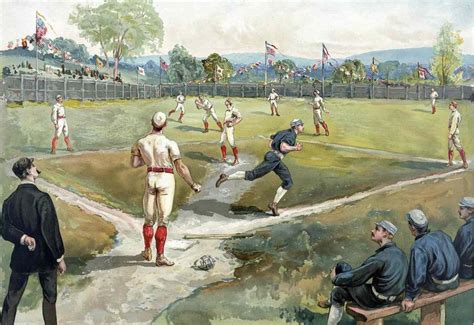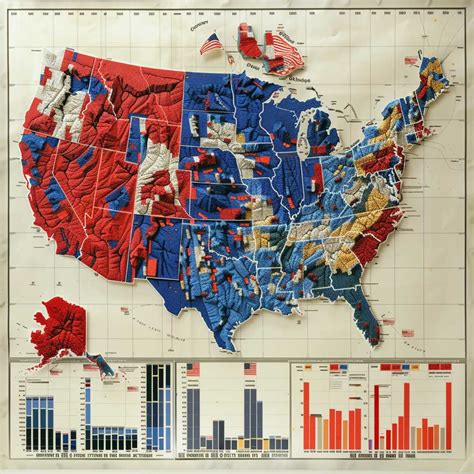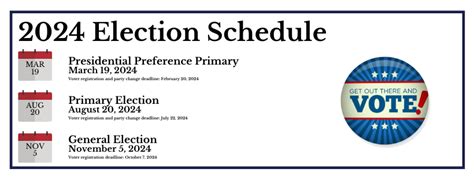Explore the rich history of baseball, from its origins and rule developments to its Civil War influence and modern-day significance.Baseball, often regarded as America’s pastime, boasts a rich and captivating history that transcends generations. From its humble beginnings to its status as a beloved sport worldwide, the journey of baseball is a testament to its enduring appeal and cultural significance. This article delves into the fascinating evolution of baseball, exploring its origins and the pivotal moments that have shaped the game as we know it today. We will uncover the key developments in baseball rules, the impact of the Civil War on its popularity, and the milestones that have defined the sport. Finally, we will examine how this storied history continues to influence modern baseball, ensuring that fans and players alike appreciate the legacy that underpins every pitch and home run. Join us as we step up to the plate and embark on an explorative journey through the history of baseball.
The Origins Of Baseball: Tracing Its Historical Roots
The history of baseball is often a topic of much debate among historians, but it undeniably has its origins in several bat-and-ball games that predate the modern sport. Some of these early games date back to the 17th century in England, where variations such as rounders and stoolball were played. These games involved elements that would later be integrated into the history of baseball.
In the early 19th century, baseball began to take a more recognizable form, particularly in the United States. The history of baseball is marked by the establishment of standardized rules in 1845 by Alexander Cartwright, a member of the Knickerbocker Base Ball Club in New York. Cartwright is credited with formalizing the rules that governed the game, including the diamond-shaped infield and the idea of three outs per inning.
Another key moment in the history of baseball occurred when the game spread rapidly through American cities, thanks to the growing popularity of organized sports. As baseball clubs emerged in various towns and cities, the game became a crucial part of American culture. The establishment of the National League in 1876 marked another significant milestone, signaling the transition of baseball from a leisure activity to a professional sport.
Various documents and records, including early newspaper accounts, chronicle the history of baseball and its evolution. A timeline can further illustrate significant developments:
| Year | Event |
|---|---|
| 1845 | Alexander Cartwright establishes the first formal rules for baseball. |
| 1857 | The first baseball convention takes place in New York City, solidifying the sport’s growing popularity. |
| 1869 | The Cincinnati Red Stockings become the first fully professional baseball team. |
| 1876 | The National League is formed, marking the beginning of professional baseball leagues. |
The game has evolved significantly since those early days, but understanding its roots is essential when considering how it has matured into America’s pastime. The history of baseball offers a glimpse into the societal changes that accompanied its growth, reflecting broader shifts in American culture and values.
Key Developments In Baseball Rules Throughout History
Throughout The History of baseball, the evolution of its rules has played a significant role in shaping the game. Here, we explore some of the key developments in baseball rules that have occurred over the years:
- 19th Century Formulations: The first organized baseball club, the Knickerbocker Base Ball Club, established rules in 1845. These rules included the concept of three outs per inning and the requirement of a diamond-shaped infield.
- The Creation of the Baseball: In the 1850s, the standardization of the baseball itself was a major development. The ball was shaped more consistently, allowing for better gameplay and a more level playing field.
- Banning of Underhand Pitching: As the 19th century progressed, the popularity of overhand pitching grew. By 1884, underhand pitching was officially banned, marking a turning point in pitching strategies and the overall pace of the game.
- The Introduction of the Designated Hitter: In 1973, the American League introduced the designated hitter (DH) rule to enhance game strategy by allowing a player to bat in place of the pitcher. This significant rule change continues to spark debate among fans and players alike.
- Instant Replay: The incorporation of instant replay in 2008 has transformed how officiating is conducted. This rule allows specific plays to be reviewed, ensuring fairness and accuracy in the game.
- Strikes and Balls: The definition of strike zones has undergone evolution through various rule changes, notably affecting pitching approaches and batting styles. Adjustments in dimensions and interpretation have continually influenced gameplay.
As we examine The History of baseball, it is clear that the development of rules has not only altered gameplay but has also influenced the way the sport is perceived and enjoyed by fans around the world. Each rule change has contributed to the rich narrative of baseball’s evolution.
The Influence Of The Civil War On Baseball’s Popularity
The Civil War, which lasted from 1861 to 1865, had a profound impact on many aspects of American life, not least of which was the world of sports. During this tumultuous period, baseball experienced a surge in popularity, becoming a significant pastime for soldiers and civilians alike. The war served as both a backdrop and a catalyst for the evolution of the game, leading to its growth in fame and structure.
Before the war, baseball was mostly played in local communities, mainly among amateur clubs. However, the necessity for entertainment and distraction during the conflict led to the game’s widespread adoption among troops. Soldiers on both sides played baseball on makeshift fields during downtime, helping to elevate its status and introduce it to a broader audience.
The return of soldiers after the war also contributed to baseball’s popularity. Many veterans who had experienced baseball during their service sought to continue playing in peacetime. This migration of baseball aficionados helped establish clubs and leagues, facilitating a more organized structure for the sport.
| Year | Major Events |
|---|---|
| 1865 | The war ends, and returning soldiers bring their love for baseball with them. |
| 1867 | The first official baseball league, the National Association of Professional Base Ball Players, is formed. |
| 1876 | The formation of the National League marks a critical moment in the history of baseball. |
Moreover, the Civil War played a vital role in establishing baseball as a symbol of American identity and resilience. The game, often viewed as a quintessentially American sport, gained significance as a unifying activity that brought together people from various backgrounds, thus reflecting the country’s recovery and hope during Reconstruction.
Overall, the Civil War catalyzed a transformation in baseball, propelling it into the forefront of American culture and paving the way for the future of the history of the sport. Its evolution from a recreational activity to a professional pursuit can directly trace its roots back to the camaraderie and culture fostered among soldiers during this pivotal period.
The History Of Baseball: Major Milestones And Innovations
The history of baseball is rich and filled with significant milestones that have shaped the game into what it is today. From the establishment of professional leagues to revolutionary changes in gameplay and equipment, each milestone has contributed to baseball’s enduring legacy.
One of the earliest major milestones in baseball’s history was the formation of the National League in 1876, which introduced a formal structure to the sport and helped professionalize it. This league brought together franchises that operated under a common set of rules, creating a competitive atmosphere that attracted fans and players alike.
Another key innovation came in 1903 with the first-ever World Series, which pitted the champions of the American League against the National League. This championship series not only intensified rivalries but also elevated the status of baseball in American culture, transforming it into the national pastime.
As the game continued to evolve, so did the equipment. The introduction of the cork-centered baseball in the 1910s significantly changed the dynamics of pitching and hitting, leading to larger scoring outputs and more exciting games. Additionally, advancements like the adoption of the designated hitter rule in the American League in 1973 transformed strategies and team compositions.
The history of baseball also witnessed notable milestones in player integration, particularly with Jackie Robinson breaking the color barrier in 1947. His impact went beyond the diamond, as it paved the way for a more inclusive and diverse sport, fundamentally altering the fabric of baseball.
Technological innovations have also played a crucial role in shaping modern baseball. The use of instant replay in the early 2010s allowed for more accurate officiating, enhancing the overall fairness of the game. Furthermore, advancements in analytics and sabermetrics have changed how teams evaluate players and make strategic decisions, reshaping the approach to building a competitive roster.
As we look at the history of baseball, it is clear that each major milestone and innovation has contributed to the sport’s growth and popularity. These developments reflect not only changes within the game itself but also the broader societal shifts that have influenced how baseball is played and viewed today.
Baseball Today: How History Shapes The Modern Game
The world of baseball today is a rich tapestry woven from centuries of history. The foundation laid by early versions of the game informs how the modern sport is played, governed, and experienced by fans worldwide. Understanding The History of baseball enhances our appreciation for current practices and innovations within the game.
One of the most significant ways history impacts the game is through the rules. Modern baseball, governed by the Official Baseball Rules, has evolved from the informal games played in the 19th century. The initial codification of rules allowed for a standardized way of playing, which has contributed to the game’s popularity and clarity. The legacy of historical figures, such as Abner Doubleday and Alexander Cartwright, is evident as their contributions continue to resonate through the rules in use today.
Moreover, the historical context of baseball’s integration, particularly with the breaking of the color barrier by Jackie Robinson in 1947, continues to influence discussions around diversity and inclusion within the sport. This pivotal moment not only changed the demographics of players in Major League Baseball but also broadened the fan base, ensuring that baseball resonates with diverse communities.
The major milestones that have punctuated baseball’s history reveal how cultural shifts have shaped the game. For instance, the expansion of Major League Baseball in the 1960s prompted changes in the structure and accessibility of the sport, leading to a larger, more global following. Today, international players have a significant presence, showcasing talent from across the world and further enriching the fabric of baseball.
In terms of technology, innovations such as instant replay and advanced analytics have revolutionized how the game is played and consumed. These developments can be traced back to historical challenges faced by players and umpires, illustrating how lessons learned from the past continue to inform the game’s evolution.
The resonance of The History of baseball in today’s game underscores its enduring appeal. Each game not only represents a contest of skill but also a celebration of a rich heritage that connects players and fans alike to the centuries of tradition that have come before them.
Frequently Asked Questions
What are the origins of baseball?
Baseball has its origins in various bat-and-ball games played in England during the 17th century, with similarities to games like rounders.
When was baseball first played professionally?
Baseball was first played professionally in the United States in 1846, with the Knickerbocker Club facing off against the New York Base Ball Club.
What significant changes occurred in baseball during the 19th century?
The 19th century saw the establishment of organized leagues, the introduction of uniforms, and the codification of rules, which helped formalize the game.
How did the creation of Major League Baseball impact the sport?
The creation of Major League Baseball (MLB) in 1903 helped unify the game, provide a structured league system, and increase the sport’s popularity across America.
What role did Jackie Robinson play in baseball history?
Jackie Robinson broke the color barrier in Major League Baseball in 1947, becoming the first African American player in the modern era and significantly impacting civil rights.
What technological advancements have changed baseball since its inception?
Technological advancements such as instant replay, advanced analytics, and sophisticated training devices have revolutionized player evaluation and game strategy.
What is the current state of baseball in terms of popularity and global reach?
Today, baseball remains one of America’s favorite pastimes while also gaining international popularity, with established leagues in Japan, Korea, and a growing interest in Europe and Latin America.









